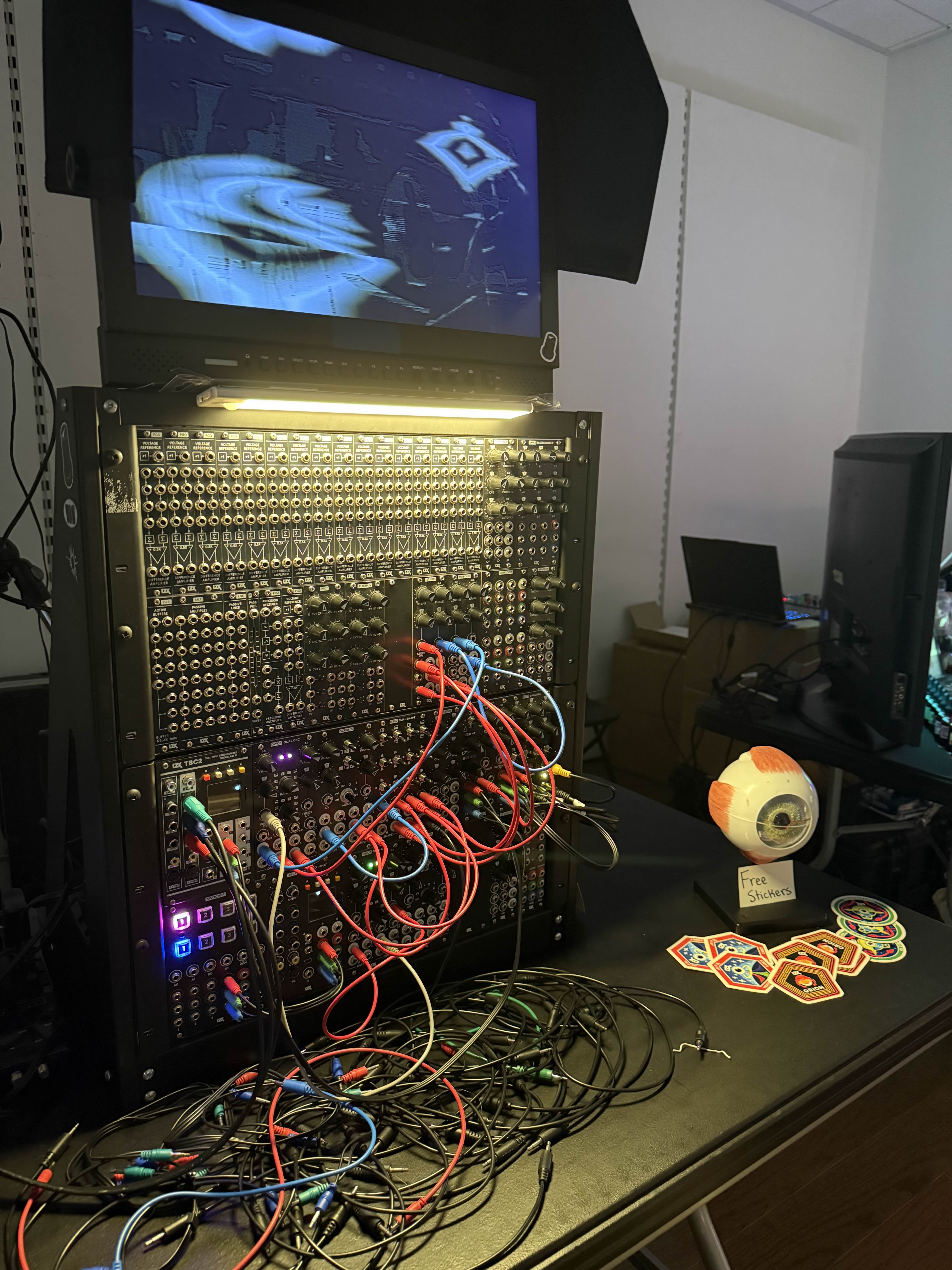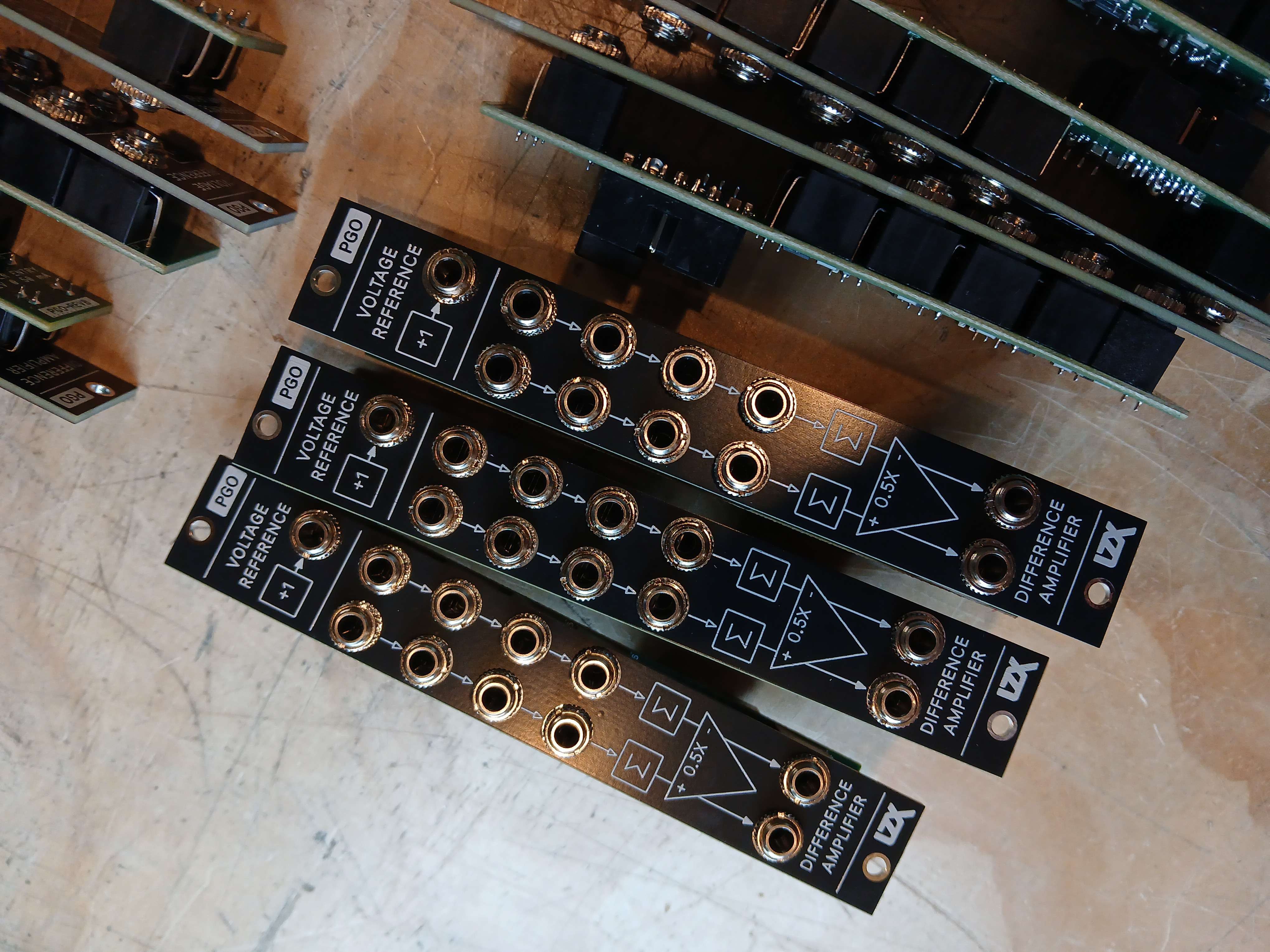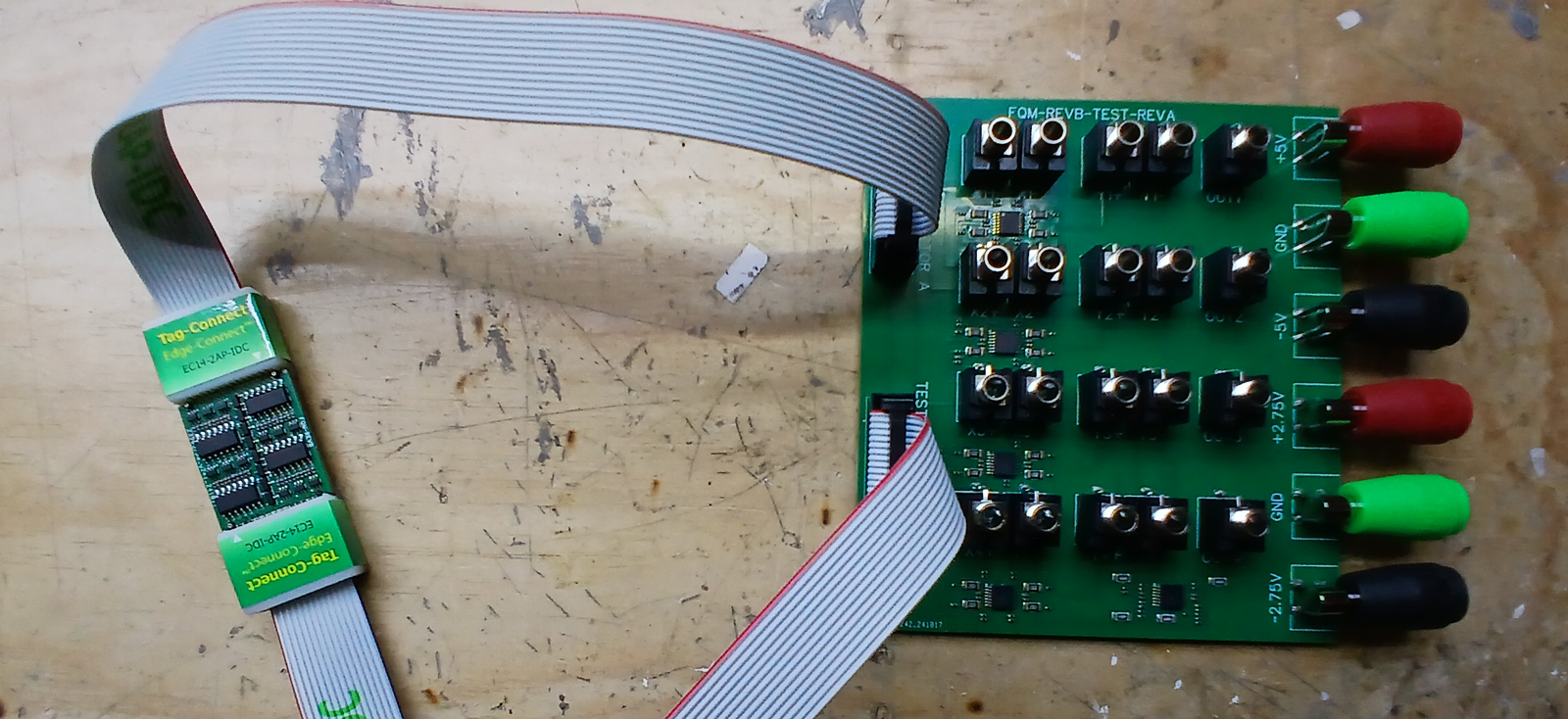Year End Update
Back in August, we laid out our plans for finishing 2025 and getting into 2026. Here's how it all turned out.
Back in August, we laid out our plans for finishing 2025 and getting into 2026. Here's how it all turned out.
Hi everyone! As promised, I've made my Chromagnon Simulator application available for download. This was a tool created for design reference during development of the hardware, so it is not very polished or useful beyond getting a preview of the instrument's functionality -- which I hope you will enjoy! The MacOS build has some issues, but can be made to work with the installation instructions below.
We had a wonderful time at Video Sync 2025 here in Portland, OR earlier this month. Our endless thanks to all of the organizers and volunteers involved in the event!

What's up next for LZX? This year has required some massive juggling of our priorities in response to the fluctuating new tariffs, which have effectively demolished our plans going into this year. We were hoping to be shipping Chromagnon by the end of the Summer, but have spent most of the past few months scrambling to figure out how we are going to continue making our products. We have been doing a lot of assessment and planning in August, and despite it all, we remain optimistic about the road ahead. Here is the top level plan as it currently stands.
Hello eyeball friends -- I'm taking a break from an intense development sprint to say thank you for your support and patience over the past month, as we shift activities and processes in response to the tariffs on most of the parts we use in production. We have the in house SMT machine running the past couple weeks and are making headway on your recent backorders.
A quick update as we wrap up May. Pricing revisions for all modules and modular systems go into effect tomorrow, June 1st.
Hello fellow gray hairs. I've aged 55-175 years since my last update. There is a lot to discuss, and not all of it is bad.
The new tariffs on imports from China started hitting us full force around the time of my last update. For example, in the past with a small batch assembly order under $800 from one of our overseas vendors, we had not been charged any import tariffs. This meant that outside of the occasional big delivery we could operate as a small business without the tariffs (imposed back in January) strangling us.
It has been a highly productive past month here at LZX HQ, despite many ups and downs. We've made a big progress push on Chromagnon with new PCB designs for subassemblies and their test boards, we've got PRM kits in stock, and we've published another round of content for our docs website.
Hi video friends,
I'm writing to provide you with the news about current and ongoing projects at LZX.
Greetings from Portland, video friends. January (and now most of February) have delivered some frustrating setbacks for both work and personal life. We had our furnace in the home/workshop go out for 10 days in January, followed by me getting sick for a couple of weeks. This kept me off the Chromagnon workbench, but I used the time to make more progress with the firmware.
Currently in the workshop we're scrambling to build the last few module restocks required to put a few Double Vision systems on the shelf. If you want one, they will be available soon!
Happy New Year from us here at LZX! We are grateful for an opportunity to be part of your creative lives and wish you triumphant returns on all of your endeavors in 2025. It is our fifteenth year of offering tools to you, and our eighteenth year of developing analog video synthesizers. I feel very excited about our point of view on our existing and future projects at LZX, and 2025 should be fun year.
Hi Vidiots & Vidiettes! We're happy to say we got the shipping notification for the Chromagnon Core PCB prototypes mentioned in the last blog today. The next update will focus on that -- in this one I wanted to provide a few updates about projects we are working on to keep the company running as we get through the final milestones with Chromagnon.
The first is a new module, PGO, a 4HP Programmable Gain & Offset processor, which is now available.

Hello video fiends -- we hope everyone had a spooky Halloween!
Per my last missive at the beginning of October, I was focusing in on revisions to the Chromagnon Core RevH board. The plan was to have those revisions complete and the board reviewed before the end of October, and I was developing multiple discrete submodules to aid in that task. I'm happy to say that the board is now ordered, but with a few weeks of hassle -- both in the revision process, and the coordination process with our external vendor.

September flew right past us here at LZX, with steady (if tedious) progress toward Chromagnon production on my end, and multiple longer term production projects wrapping up in the workshop.
I hope everyone has enjoyed their Summers and is looking forward to the Fall. For me, this time of year has always meant getting ready to learn, whether that was in my prior career in e-learning development, with my kids starting the next grade, or in my own educational goals. This year it will mean entering a period of content creation for LZX-- documentation, videos, tutorials, and any other resources that serve your own learning and creative pursuits in making video art.
Over the past several weeks I have been writing Chromagnon’s firmware, and I’m happy to say that I now have a complete version ready for testing. I wanted to reach this milestone before I wrote a new blog, as it represents my exit from the Code Cave and back into the workshop. So let my eyeballs readjust – this blog will mostly be about the software.
Dear video friends,
June has seen a lot of projects landing at the workshop and some significant pushes in firmware development. Over the Spring we have transitioned into outsourcing SMT assembly of our modules in smaller batches, in an effort to keep things stocked and flowing, and those efforts are running smoothly.
Hello on Tuesday. I hope everyone in the States had a nice Memorial Day weekend. Lots to cover in this update, so I will be terse.
Black prototypes of the Chromagnon plastic pieces and enclosure arrived, and the test fits are looking great. The pieces below aren't final for the enclosure, but should give you the plan on how it all fits together. Now that all the dimensional constraints are confirmed, I can make any cosmetic tweaks (rounded corners, for example) and order an initial production quantity.
Wow! April flew past, here at LZX HQ. Our improvements to operations and inventory have allowed us to process a large number of tasks in the ongoing effort to keep modules and stock while taking steady steps towards Chromagnon's launch.
Hello, video pals!
We are pushing through April! The current primary focus is on preparing our resource planning system for Chromagnon and smoothly flowing the production of our other projects.
Hello, Chromagnonites and other video freaks.
March has flown past here at headquarters. The last 3 weeks have been dedicated to a spring cleaning of the workspace and an inventory data update, in preparation for Chromagnon and continuing module production. There were some shifts in team schedules which have required me to focus most of my time on this project, so I apologize for missing some blog posts.
Hello everyone,
I apologize that we missed last week's update. I was dealing with family visiting from out of state, a dental emergency, and a busy week of high school musical performances (my child Kat was in a production of Grease.) We did meet several goals however --
A quick update for last week.
Good afternoon, video folk.
This past week were happy to celebrate validation of the analog circuitry on the Chromagnon Core RevF board -- and we're close to fully integrating the changes into RevG.
Hello, Chromagnonites.
It's been another productive week validating the Chromagnon Core assembly. The video output is looking good (see below), but it required some complex rework to get there.
Hello friends,
It's nice and sunny here in SE Portland. This week was another steady week of Chromagnon testing and firmware updates for the new core assembly, with a few foibles. (My trusty lab laptop needs a new power jack installed.)
Hello Chromagnonfolk,
We had a busy week here, catching up on activities after being iced in last week. I spent most of the week reviewing the Chromagnon Core PCB RevF, and am relieved to report the assembly has passed everything in the 42-step test plan I mentioned in the last blog post.
Hello visual artists and Chromagnonites -- this week has been a bit crazy. Here in Portland we have all been iced into our homes since the holiday on Monday, so the typical workshop crew is working abroad. We've focused that on getting ahead on content creation for new videos and social media posts -- a project that is going well and should buy us some free days in February. I'm thankful everyone in the shop also has systems at home, or else this would not have been possible.
Howdy Chromagnon-folk. It's Friday and the week has been productive at LZX HQ. We're expecting snow over this upcoming holiday weekend here in southeast Portland.
Greetings Chromagnonites.
We’ve had a great start to the year here in the workshop. A handy form was provided in the last journal entry and you sent in a lot of questions! This post will be focused on answering all of them.
It's Friday... howdy! As promised in the last post, here is a list of notable milestones we reached at LZX in 2023.
It's the last Saturday of 2023, and it's been a busy week. With some LZX teammates out of town and under the weather, I've done my best to mind the shop and ship your orders.
It is a Monday: the 18th of December, 2023. At LZX we are wrapping up an exhausting year, and probably our most challenging yet. It has been difficult to speak publicly on our ongoing plans and projects with a mammoth in the room: Chromagnon is multiple years overdue, and I have failed to accurately estimate the shipping date a few times now.